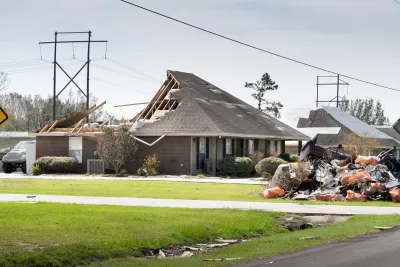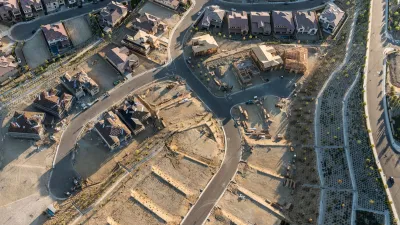As the frequency and severity of weather events increases, building codes need to be adjusted to include resilience principles.

In the face of rising disaster recovery costs and a looming property insurance crisis, Eleanor Kitzman, the founder of Resolute Underwriters, Inc., says it’s necessary to put in place stronger building codes that incorporate proven, affordable climate-resilient standards and dramatically scale up funding and incentives to help retrofit existing homes to be more resilient.
Last year, the U.S. saw the highest number of major disasters, 23 total, since the federal government started keeping records in 1980. In addition to the massive toll on human life and health, as well as the billions of dollars of related property damage and losses, these severe events are driving up insurance premiums and deductibles and leading to reduced coverage or insurance companies moving out of hard-hit areas altogether.
“The percent of uninsured homeowners has risen from 5% to 12% in just the last three years due to increasing costs,” Kitzman writes. “We can only fix this insurance crisis by fixing our underlying risk crisis. The majority of homes in the U.S. were built to codes that did not anticipate the rapidly increasing extreme weather we are experiencing today.”
She admits there is no one-size-fits-all solution, as risk mitigation is peril specific, but she highlights a few programs in the U.S. that are combining creative thinking, innovative funding, and collaborative effort to tackle the challenge:
- Alabama: The Strengthen Alabama Homes program, launched ten years ago, offers homeowners grants of up to $10,000 to install roofs that meets Fortified™ construction standard, with the aim of reducing losses from high winds, hail, tornadoes, hurricanes and other severe convective storms.
- Louisiana: A climate resilience grant from the Louisiana Office of Community Development and Louisiana Homes Corporation supported the development of 35 new homes built to Fortified standards, which were barely scratched when Hurricane Ida made landfall in August 2021, despite catastrophic damage elsewhere along the nearby coast.
North Carolina and South Carolina also have Fortified roof grant programs and last year, and Louisiana created a grant program modeled on Alabama’s SAH program. Kitzman says other states are considering similar programs.
“Stabilizing insurance markets starts with strengthening homes, families and communities. We know what needs to be done, and we need to do it now,” Kitzman says.
FULL STORY: Climate resilient construction helps mitigate disasters

Study: Maui’s Plan to Convert Vacation Rentals to Long-Term Housing Could Cause Nearly $1 Billion Economic Loss
The plan would reduce visitor accommodation by 25,% resulting in 1,900 jobs lost.

North Texas Transit Leaders Tout Benefits of TOD for Growing Region
At a summit focused on transit-oriented development, policymakers discussed how North Texas’ expanded light rail system can serve as a tool for economic growth.

Why Should We Subsidize Public Transportation?
Many public transit agencies face financial stress due to rising costs, declining fare revenue, and declining subsidies. Transit advocates must provide a strong business case for increasing public transit funding.

Columbia’s Revitalized ‘Loop’ Is a Hub for Local Entrepreneurs
A focus on small businesses is helping a commercial corridor in Columbia, Missouri thrive.

Invasive Insect Threatens Minnesota’s Ash Forests
The Emerald Ash Borer is a rapidly spreading invasive pest threatening Minnesota’s ash trees, and homeowners are encouraged to plant diverse replacement species, avoid moving ash firewood, and monitor for signs of infestation.

Agreement Keeps NYC Congestion Pricing Alive Through Summer
The tolling program will continue while a court considers the city’s lawsuit against the Trump administration.
Urban Design for Planners 1: Software Tools
This six-course series explores essential urban design concepts using open source software and equips planners with the tools they need to participate fully in the urban design process.
Planning for Universal Design
Learn the tools for implementing Universal Design in planning regulations.
Ascent Environmental
Borough of Carlisle
Institute for Housing and Urban Development Studies (IHS)
City of Grandview
Harvard GSD Executive Education
Toledo-Lucas County Plan Commissions
Salt Lake City
NYU Wagner Graduate School of Public Service





























